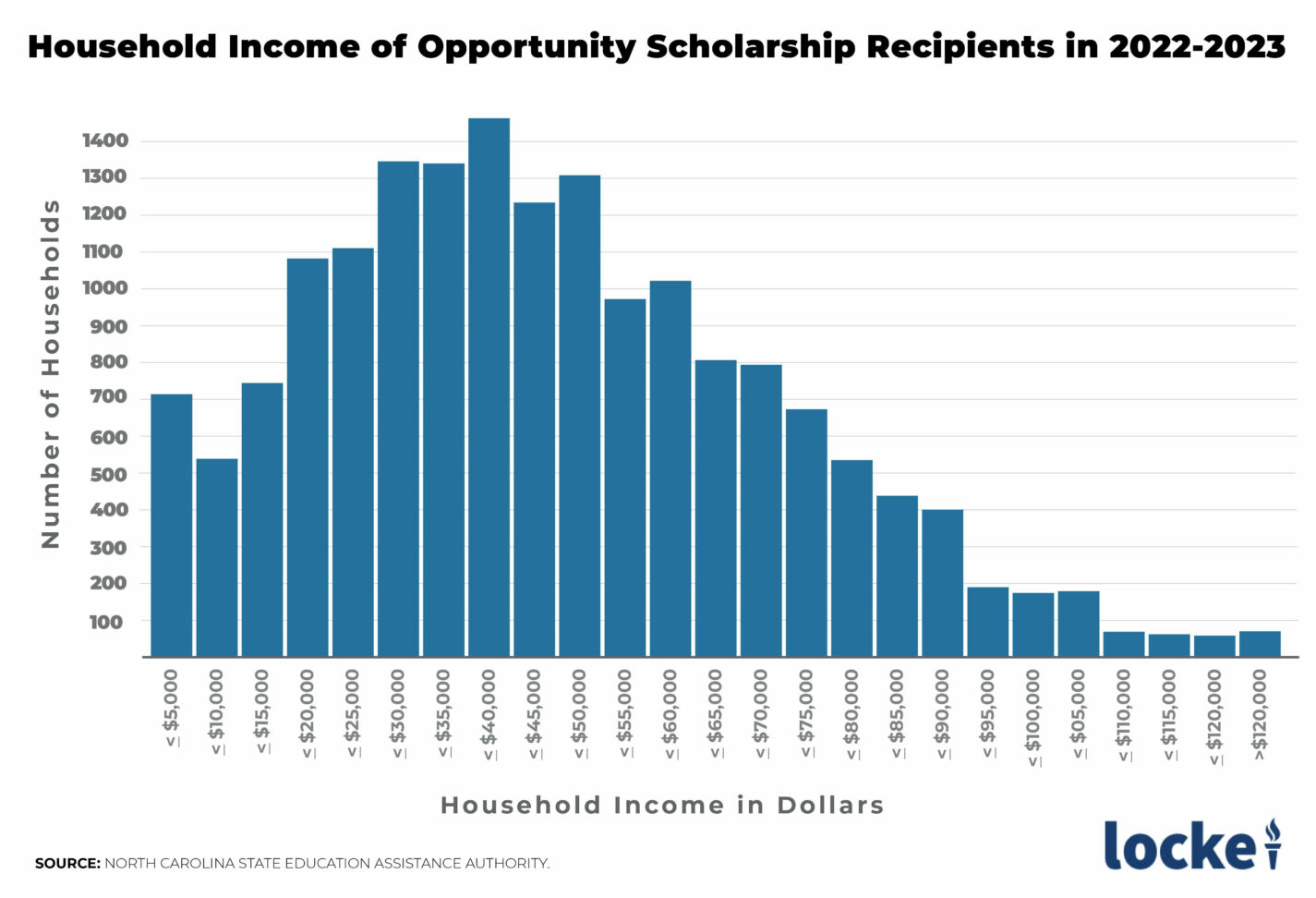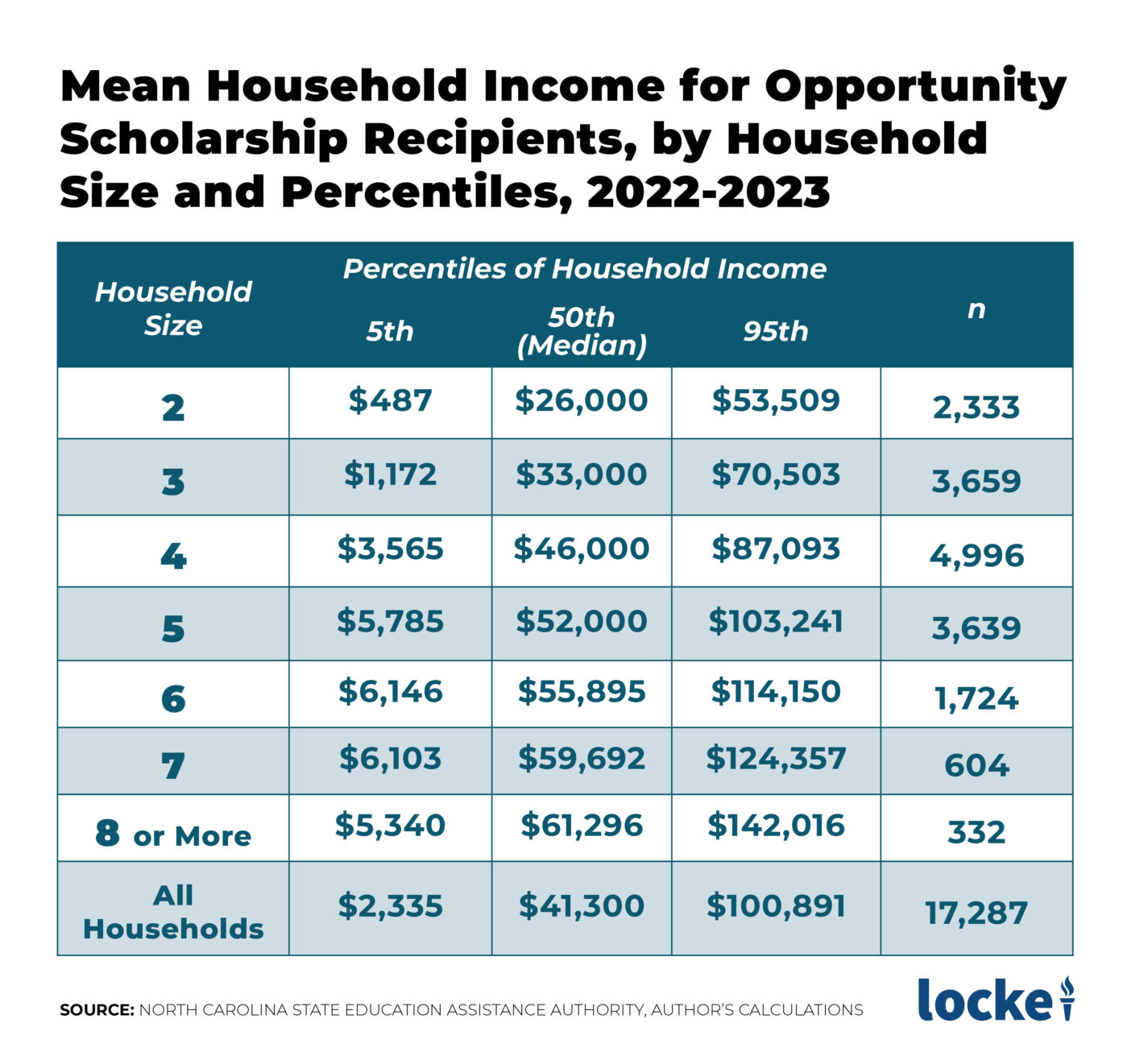- State government data show that North Carolina’s Opportunity Scholarship Program serves students from low- and moderate-income households
- Of the 17,287 households with OSP recipients during the 2022-2023 academic year, more than 8,000 households reported incomes of $40,000 or less, while approximately 350 households reported incomes of more than $100,000
- Policymakers could expand access to school choice by removing income eligibility requirements and allowing all families in the state to apply on behalf of their kids
Data from the North Carolina State Education Assistance Authority (NCSEAA) show that the Tar Heel State’s Opportunity Scholarship Program primarily benefits students from low- and moderate-income households who might not otherwise be able to afford private-school tuition.
The Opportunity Scholarship Program (OSP) is a private school choice program that “gives the parents of eligible students a voucher to help cover the cost of tuition and fees at the private school that best serves their child’s needs.” During the 2022-2023 school year, more than 25,500 students used the OSP to attend private schools.
The OSP is currently a means-tested program, which means that only families making at or below a certain income threshold are eligible to apply on behalf of their children. The threshold differs depending upon how many children are in the household. Families making at or below 200% of the amount needed to qualify for free or reduced-price lunches meet the income eligibility requirement. For a family of four, for example, the income cap is $111,000.
This session, state lawmakers are seeking to give more families broader access to school choice by removing the OSP’s income eligibility restrictions and opening the program up to any family in the state. Many believe that OSP expansion will be included in the conference budget, which is anticipated to be released either this week or next.
Data recently obtained by the John Locke Foundation’s Center for Effective Education (CEE) reveal that the program is empowering families who might not otherwise be able to afford private-school tuition to choose the nonpublic schools that work best for their children.
For the 2022-2023 school year, 25,547 students received an OSP voucher. Those students reside in 17,287 households.
The CEE set out to discover more about the income distributions of OSP recipients’ households. The income ranges are shown in the following chart.

The data reveal that most OSP recipients live in low- to moderate-income households. In fact, for the 2022-2023 school year, the average household income among OSP households was $44,299. A total of 8,401 households disclosed making $40,000 or less, while only 351 households reported incomes of more than $100,000 dollars.
North Carolina law does not require students in foster care to live in an income-eligible household. While some students in foster care may also meet income eligibility requirements, others may not. At publication time, representatives from the NCSEAA had not yet responded to requests for clarification about how many households had one or more children in foster care and how many OSP recipients were in foster care for the 2022-2023 academic year.
Overall, the mean household income was $2,335 in the 5th percentile, $41,300 in the 50th percentile, and $100,891 in the 95th percentile.

Gov. Roy Cooper and other opponents of the OSP claim that expanding the program would allow millionaires or even billionaires to finance their children’s education. An analysis of the most recent data on the household incomes of OSP recipients indicates that’s not likely to be the case.
Furthermore, recent legislative proposals to expand eligibility for the OSP have continued to prioritize lower-income households. For example, House Bill 823, which would replace the OSP’s income-eligibility caps with “a sliding-scale system in which household income determines the size of the voucher,” would give first priority to applicants with the lowest household incomes and allow them to qualify for up to 100% of the maximum award, or approximately $7,400 based on current numbers.
The OSP is helping many families who might not otherwise be able to afford private-school tuition to access the school that best serves their child’s needs. Lawmakers could empower more families with school choice by expanding the OSP to all families in the state.


